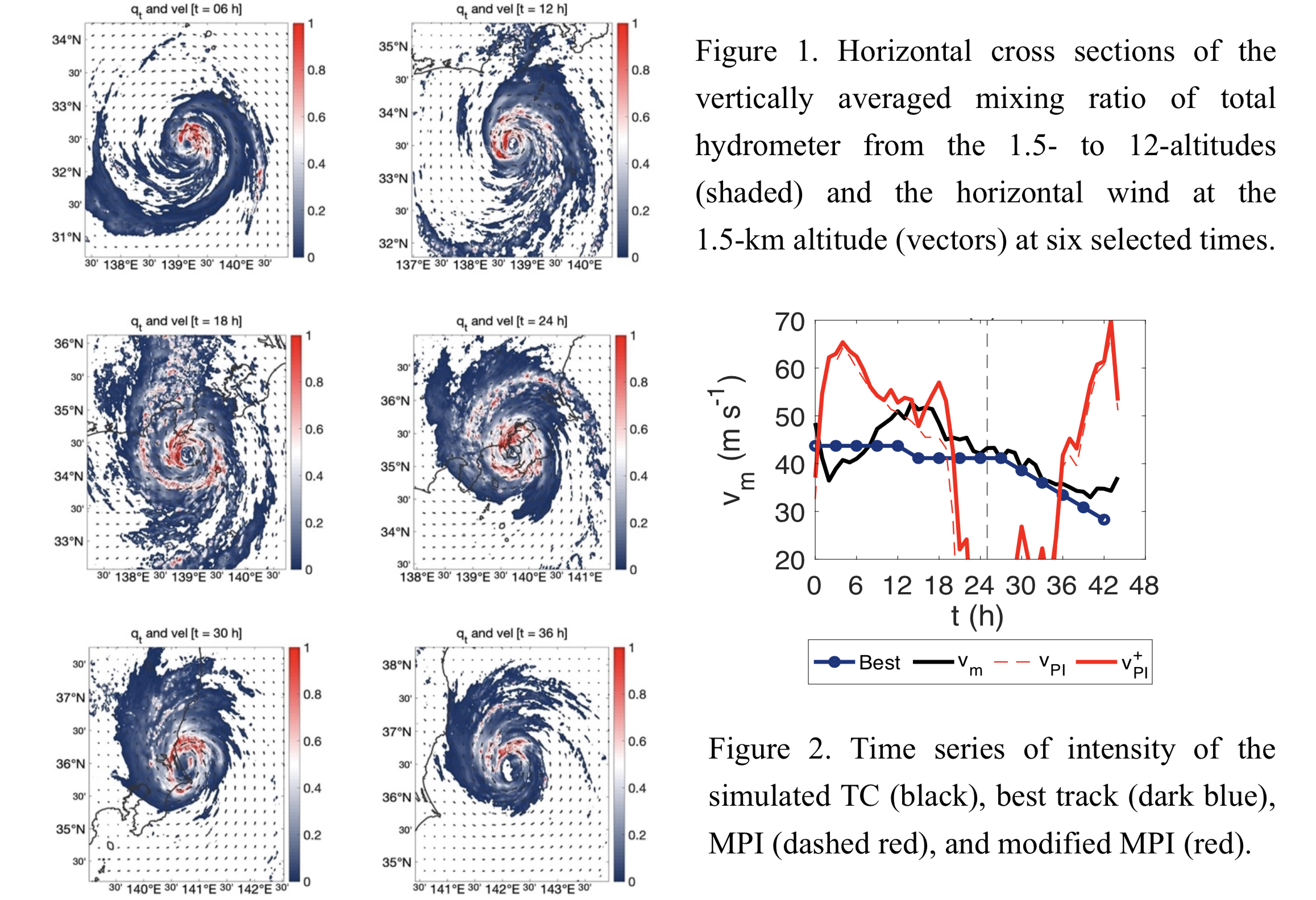Graphical Abstract
Miyamoto, Y., H. Fudeyasu, and A. Wada, 2022: Intensity and structural changes of numerically simulated Typhoon Faxai (1915) before landfall. J. Meteor. Soc. Japan, 100, 181-196.
Special Edition on Typhoons in 2018–2019,
https://doi.org/10.2151/jmsj.2022-009
Graphical Abstract
Published
Plain Language Summary:
A numerical simulation for Typhoon Faxai (1915), which made landfall with the central pressure of 960 hPa in the Kanto region of Japan was conducted. The simulation successfully simulated the realistic track and intensity of Faxai for 48 h around landfall. The simulated intensity was strong until the time of landfall. The structure, identified as having an axisymmetric flow field and eyewall, was similar to that of a well-developed tropical cyclone (TC) in the tropics. Around the TC center, the surface latent heat flux was large while the vertical wind shear was relatively weak at midlatitudes. The simulated and best track TC intensities exceeded the maximum potential intensity (MPI) for approximately 12 h before landfall. It is implied that the structure of TC is similar to that of a developed TC in the tropics. The present analyses suggest that the strong intensity of Faxai results from favorable environmental conditions and vortex structure.
Highlights:
- A numerical simulation indicates that the strong intensity of Typhoon Faxai (1915) resulted from favorable environmental conditions and vortex structure.
- The surface latent heat flux is large and vertical wind shear was weak until the landfall.
- The intensity exceeded the maximum potential intensity before the landfall.







